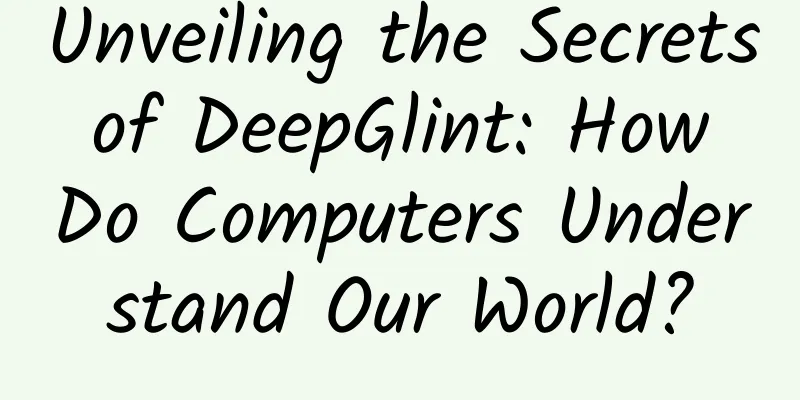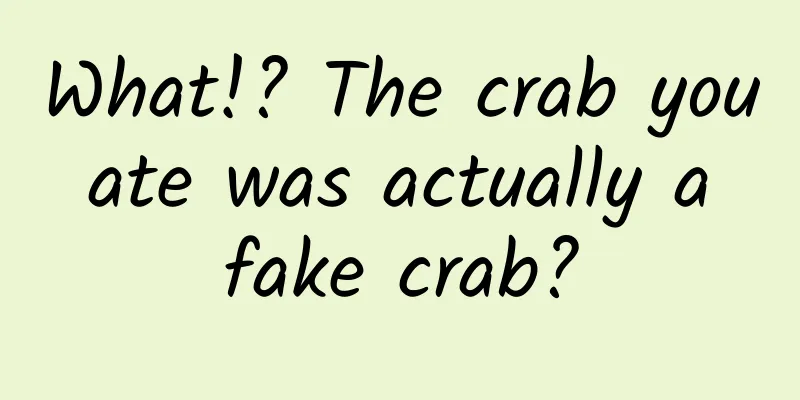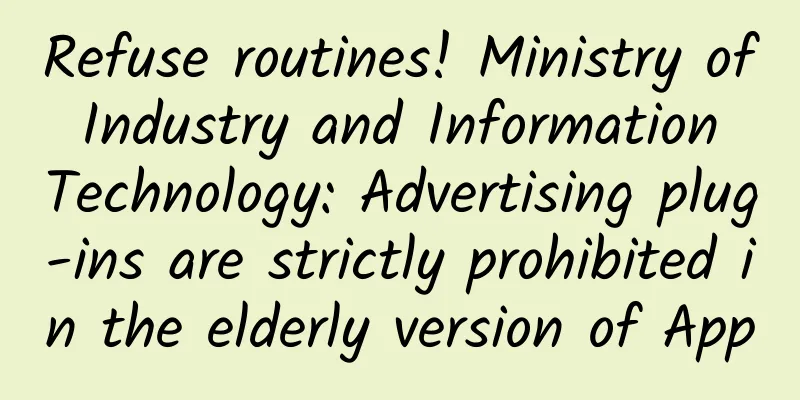3 key points for writing information flow copy!

|
In information flow advertising consultation, the most frequently asked questions I get are: “ How to write an attractive copy ?” In fact, since I started writing copy for real estate developers, home furnishing stores, department stores, schools, banks, tourist attractions, and fast-moving consumer goods 10 years ago, everyone I meet likes to ask this question. It is difficult to answer this question completely, but if you have a framework first, you can continue to talk about it later. Therefore, the purpose of this article is to give you a thinking framework for writing copy. PS: When we are in class, we often start from the basics, and the same applies to writing copy. Don’t underestimate these basic skills. This is the basic framework that all best-selling copywriting will follow. It has been verified to be effective by 14 industries and 127 advertisers that I have dealt with. Basic first step: find people A phrase that copywriting masters like to say is: write copy like you are writing a love letter. The meaning of writing a love letter here is not to ask you to write those cheesy words, but to make it clear who your love letter is written to. Only when you have that person in your heart can you write a touching love letter. If you have never written a love letter and cannot understand the feeling of having someone in your heart, you can also think about writing essays when you were a student. Before writing an essay, we need to consider whether it is written for a teacher we don't know or for a teacher we know; whether it is an ordinary essay or a classroom composition. The writing methods are different for different purposes. The prerequisite for getting high scores is that you must know the other party's standards and requirements for giving high scores , and then write accordingly. Find the exact target you need to market to Similarly, if you want your customers to be interested in you and pay close attention to you, you must know who your customers are, what characteristics they have, whether they have any troubles that need to be solved, whether they have any dissatisfaction that needs to be changed , whether they are male or female, adult or child, young or old, novice or veteran, etc. Once you have identified the target, it will be much easier to consider how to communicate with them. Let me give you a simple example. For example, a home improvement company wants to do information flow advertising: If the target audience is the first-time buyers who need to buy a house and are taking out a loan, then the main point is high cost performance, and explain in the copy that the decoration will not make them bear more financial pressure; If the target audience is people who don't have time to take care of or don't understand decoration, the copywriting can accordingly feature an all-inclusive concept, stating how to make the customer worry-free, how to avoid the problems that the customer is worried about, and so on. Find all the objects you need to fix In real life, many purchasing behaviors, from proposing a demand, to collecting information about the target product, to proposing alternative plans, and finally to deciding which one to buy, often require the participation of two or even more people, and sometimes even the whole family or the entire company . This requires us to write corresponding copy separately and accomplish one goal at a time. For example, buying a car. If the car is preferred by a young person who has just started working, but the young person does not have sufficient ability to pay and needs support from his parents, then he must come up with reasons that can convince his parents to help him pay. If the copy is only written from the young person's perspective, such as merely emphasizing that the design is cool and it is good for picking up girls, how can he convince his parents who cannot understand the young people's ideas? If the copy can help the son give his parents reasons to buy a car, such as practical functions, thoughtful after-sales service, high cost performance, low operating costs and other more practical needs, the probability of a deal being closed will be much greater. A friend came to consult me before, asking who makes more decisions in the home improvement industry. This is a big question. You have to score whether you are facing the market for improving housing or the market for housing in urgent need. Assuming that your customers are the first to buy a house, and they are customers who buy wedding houses, then you have to see whether there are many mama's boys in the area where you are targeting. If there are more mama's boys, this also needs to be segmented as a population. That is, the two people who are getting married are not the targets of your targeting, but the parents of the man or the woman. Parents exist as influencers of this consumption, so what kind of people do the parents like and what information do they care about, such as promotions, then your copy must display this kind of information. Of course, the couple themselves should also be targeted. If you have enough budget, you can target men and women separately. When targeting men, you can choose tougher creative ideas (I am just making an analogy here, tough ideas may not necessarily be popular). Assuming the man sees the ad and is interested, whether he will become the decision maker later depends on whether you give enough reasons for him to choose you, or whether you give enough reasons for him to convince the woman to choose you together. Similarly, other products such as buying a house, buying home appliances, financial management, travel, education and training, which may have other relevant stakeholders, also need to consider the advertising targets comprehensively. The larger the amount and the more important the product is, the more people may participate in the decision-making, and the copywriter needs to give corresponding reasons for purchase. If you don't make a detailed analysis of your audience and just promote your marketing ideas to everyone, then you know that the whole bank is promoting marketing and you won't be lucky enough to stand out, let alone achieve any results. Core Step 2: Eye to Eye After finding out who your target customers are, the second step is to know what their needs are. The strategy given by many experts is to consider customer needs from the user's perspective. But this statement is actually a bit strange. Because in most cases, users don’t actually know what they want, so if you stand in their perspective, it means you don’t know what they want either … A better approach is to reverse the user's perspective , that is, to stand in the customer's shoes and understand what he doesn't like and is not satisfied with. Then, conversely, remove the "no" and do things that he likes, is satisfied with, and is willing to accept. Arrive at the intersection he must pass in advance and wait for him Generally speaking, customer needs are closely related to the word "no". For example, people who buy glasses for myopia will have such "no": 1. Wearing glasses frequently can cause fatigue - "uncomfortable"; 2. The glasses are outdated and old-fashioned - not fashionable; Regarding those who suffer from eye fatigue, we can infer from the word “no” that they need a pair of glasses that will not cause eye fatigue, that is, more comfortable glasses - here, comfortable glasses are the customer’s demand. For those who think glasses are outdated and old-fashioned, we can infer that they need a pair of glasses that do not make them look tacky, that is, glasses that make them feel fashionable - here, fashionable glasses are the customer's demand. Comfort and fashion were originally followed by the word "no", which reflected customers' dissatisfaction. Now if we remove the word "no", it is what customers want. Once you find out what the customer wants, you can find the direction of the advertising copy. Still targeting eye fatigue, customers want a pair of glasses that can prevent eye fatigue - with this pair of glasses, you can say goodbye to eye fatigue ; Customers who think glasses are old-fashioned actually want a pair of glasses that make them feel fashionable - with this pair of glasses, they can transform themselves into a fashionable person, a must-have for picking up girls . Whether it is comfort or fashion, it is what the customers want. If the corresponding products have never appeared in the market, customers will not think that there is something wrong with the market, but will doubt whether their requirements are too high or even unrealistic. At this time, the copywriting that we have slightly processed conveys the appeal of fashionable glasses and high comfort to customers, which gives them a feeling of having found a treasure , and this creates a different shopping mentality. Inadvertently sneak into the customer's mind So the question is, many copywriters will say, how would I know what the client is dissatisfied with? I am not Sun Wukong who can get into the client's stomach. It is a practical and effective method: conducting interviews and conducting research . If your target customers are students , try to mingle with them and use their thinking to think about what they don’t like, what they are dissatisfied with, and what makes them uneasy. If your target customers are elderly people , listen to their complaints and why they feel unsafe, unhappy, and unhealthy. If your target customers are housewives , chat with them more. Even if you are listening while they are chatting, you will be able to collect a lot of complaints about unfairness, lack of profitability, and dissatisfaction in minutes . The longer you spend with your target customers, the better you will be able to grasp their worries, thoughts, and needs. To give a simple example, empty-nest elderly people are prone to feeling unhappy, unhealthy, and uneasy. If we have a sunset travel route to promote to this type of customer, we can focus the copy on how it can make the elderly happy (many elderly people traveling together, have common topics, and are not lonely), healthy, and live longer (going to farmhouses, oxygen bars, and breathing fresh air), so that the elderly feel that we understand them - with resonance, the buyer and the seller are no longer on the same side, but people standing on the same front, and subsequent sales will come naturally. Key Step 3: Talking After finding the person and making eye contact, it’s finally time to take the crucial step: having a conversation. What is the right word? Let’s start with an example that everyone is familiar with: the iPod. When Apple officially released the first-generation player in the iPod series in 2001, Jobs did not say it was big or extra-large. Instead, he said it “puts 1,000 songs in your pocket” - people immediately understood the value of the iPod . Simple, clear, neat, and to the point - this is the expression of Jobs' style and also an effective way of expression in copywriting. Minimize the cost of understanding It is undeniable that the form of information flow advertising is very considerate to customers: disguising the advertisement as information that is useful to customers and lurking in the information, making people accept the advertisement unconsciously - with such a strategy, advertisers only need to prepare advertising titles and pictures that are simple, clear, and similar to information that customers can instantly perceive and feel. In the 1 second that the customer sees the advertisement, "whoosh", it will attract the customer accurately and neatly like a magnet. For example, “put 1,000 songs into your pocket” - it brings up a very vivid picture at first glance, and you will unconsciously want to learn more about how to put 1,000 songs into your pocket. However, the reality is that many copywriters seem to be suffering from straight male cancer and insist on writing the product selling points into instruction manuals. For example, the same iPod may be written by straight men as "a music player with 5G memory." Oh, 5G is big, equal to 5120MB, and a song is about 4MB, so it can hold more than 1,200 songs... Wait, which user would be so bored to convert? So remember: copywriting must meet an important premise: minimize the customer's understanding cost . Only simple and clear copywriting can hit the user efficiently. Communication should be about value rather than product The purposes of information flow advertising are nothing more than two: one is exposure, and the other is conversion. But no matter what your purpose is, if you want to advertise, you must meet one major premise, which is to gain the attention of customers. You have to know that users will not naturally pay attention to you unless you make them feel that you are related to them and that they can gain benefits from you - the benefits here are value. Every commodity has its own value, which can be functional value or emotional value. The so-called functional value , as the name suggests, is the functional benefits that can be obtained after using this product, such as convenience, deliciousness, fun, comfortable living , etc. Emotional value refers to the emotional benefits that can be obtained after using this product, such as a sense of superiority, happiness, security, healing , etc. For example, the iPod mentioned above. Most users will not be impressed by the mere mention of 5G, but if you put 1,000 songs in your pocket, it is like sending a message to users : "I am better, more convenient, and more fashionable than any music player you are using now! You can abandon them and use me!" Advanced Copywriter: “That’s me” It should be noted that in actual use, the emphasis of these two values will change as the needs of the targeted population change. For example, one of the two promotional projects I'm working on recently is a training course specifically for women to guide their dressing style. The target audience is mainly college students who are about to graduate, newcomers to the workplace, and full-time mothers over 30 years old. During the communication and interviews with the target audience, it was found that these types of users are more fascinated by chicken soup articles and can easily get emotional resonance from them. So, when we are writing copy for the training courses, we need to refer to the writing method of chicken soup articles to write the copy , and map it to the customers through some inspirational emotional inspirational novels, so that they can feel from the bottom of their hearts that this course is specially designed for them, and ultimately achieve sales conversion. Another project is the promotion of running shoes. This pair of shoes uses a very special material (this is the product feature) , and it is very light to wear when running (this is the functional value) . Buyers can run easily after wearing them, get better results in marathons, and improve personal satisfaction (this is the emotional value) . As a general practice, the copywriter will certainly spend a lot of effort to introduce the materials that make the shoes special, but is this really what the customer cares about? Not really. What we need to do is to pay attention to the hidden thoughts of customers who are engaged in marathons and fitness - that is, they want a pair of magic shoes that are more comfortable to wear, allow them to run more smoothly and achieve faster results. It will be easier to hit him if you write copy based on this emotional need. “How do you know? I really need a pair of shoes that can help me break my running record!” To sum up, the copywriting that makes people can't help but pay for their money is: 1. Find the person before writing the copy and make the target of your marketing as specific as possible; 2. When writing copy, you should use the user's perspective in reverse, find dissatisfaction, and eliminate it ; 3. Good copywriting should convey the value of the product rather than the product itself. Author: Precision delivery of information flow advertising Official account: Precision delivery of information flow advertisements (ID: feed-advertise) |
<<: How to make the most of your Google Ads budget? Share 4 tips!
>>: 3 common scenarios for community operations!
Recommend
Google launches new Qaya service: Help creators easily build online stores
The new project, Qaya, co-founded by Nathaniel Na...
How to mine long-tail keywords for a website? The secret to doubling your website traffic!
People who are now engaged in search marketing ar...
What do the Tik Tok short video tags mean? How to quickly tag on Tik Tok?
With the explosive popularity of short videos on ...
The “turning point of fate” of offline advertising
2020 was supposed to be the year of recovery for ...
Good news from the "Struggler"!
On March 11, the "Exploration One" rese...
After analyzing 670 million mobile app push notifications, we saw several interesting trends:
Push notifications are the cornerstone of every m...
How many of the “Ten Don’ts” of Product Operations have you committed?
When doing product operations , we have listened ...
Former Baidu employee reveals the secrets of knowledge search marketing: Get over 10,000 accurate exposures per week at 0 cost!
Search engine promotion is keyword-based marketin...
Apple Music Streaming Makes Up for Loss: Seeking Exclusive Copyrights from Singers
Apple , which has been focusing on making and sel...
A head-on clash between Volkswagen ID.3 and BYD Dolphin, priced at 130,000 yuan. Which one do you choose?
As competition in the domestic new energy vehicle...
How to plan an event? Activity planning process conception
1. Principles of activity task allocation 1) Spec...
up to date! Reference data of 39 information flow platforms!!
The November data of major information flow platf...
The outcome of the competition for power battery technology routes from the Gree incident
In the main battlefield of power batteries, terna...
Research shows that global software spending will grow despite market downturn
Software spending, driven largely by cloud comput...
5 issues to pay attention to in retention activities, starting with clarifying the two activity purposes
Attracting new users and retaining existing users...









